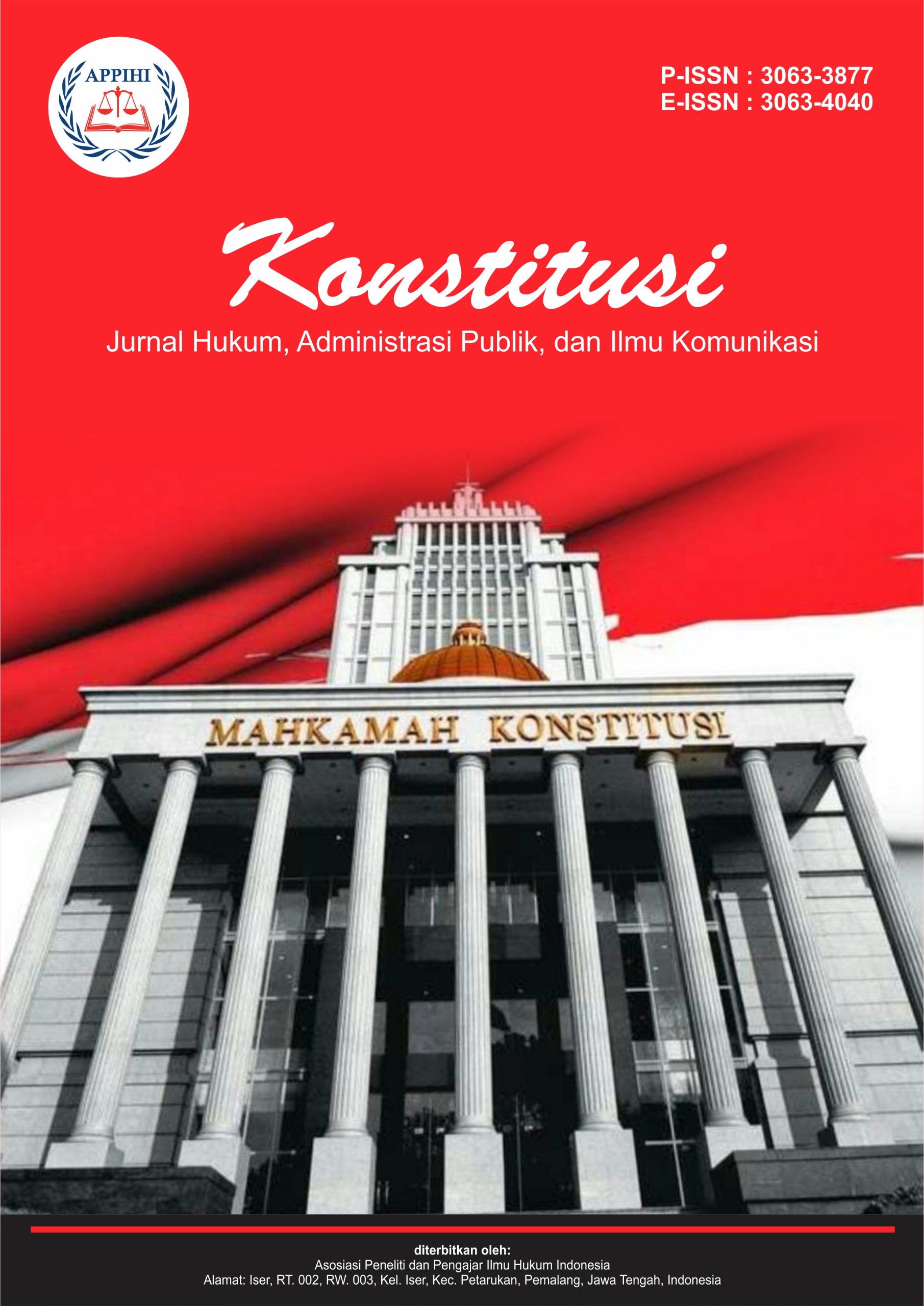Efektivitas Kegiatan Reses Anggota Dewan Perwakilan Rakyat (DPRD)Kabupaten Badung
DOI:
https://doi.org/10.62383/konstitusi.v2i3.824Keywords:
recess, effectiveness, house of representativeAbstract
The administration of government in a country is not only found in the center of government. The central government gives authority to regional governments to carry out their own government. Various dynamics in changes in regional government policy range from centralized to decentralize. In carrying out his duties, a people's representative must know what the constituents he represents want. There are many ways that people's representatives must do to find out what the people want. One way is to communicate between the two. Communicating with constituents is a mandatory thing that cannot be done by people's representatives. The people have the right to convey what they want to the people's representatives to fight for in a public policy. One form of communication between people's representatives and those represented is through DPRD recess activities. The research was carried out to analyze the effectiveness of the recess in the Badung Regency DPRD which was analyzed using a qualitative descriptive approach. The implementation of a recess for members of the Badung Regency DPRD is a mandatory matter which has been regulated in statutory regulations and regional regulations. It is not technically regulated; it only regulates the period and limits of the recess and the recess is held three times a year. The recess activities are carried out in various ways. However, in its implementation, several technical activities are regulated in the recess activities, namely the time of the activity, place, activity targets, discussion process, accommodating community aspirations and even written and verbal reporting of recess results. Observation results show that Badung DPRD members have engaged effectively with their constituents during the recess period, gathering important input and concerns that are crucial for formulating local government policies. This interaction underscores the importance of active participation and accountability in ensuring that the legislative process is aligned with the needs and aspirations of the community.
Downloads
References
Achmad, S. R. (2002). Sistem manajemen kinerja. Jakarta: Gramedia.
Arikunto, S. (2002). Prosedur penelitian: Suatu pendekatan praktik. Jakarta: Rineka Cipta.
Hartoyo, S. (2000). Pengantar ilmu administrasi. Surakarta: UNS Press.
Hasibuan, M. S. P. (2003). Manajemen sumber daya manusia. Jakarta: Bumi Aksara.
Ibrahim, A. (2007). Pokok-pokok administrasi publik & implementasinya. Bandung: Aditama.
Jeddawi, M. (2008). Reformasi birokrasi, kelembagaan, dan pembinaan PNS. Yogyakarta: Kreasi Total Media.
Keban, T. Y. (2004). Enam dimensi strategis administrasi publik: Konsep, teori, dan isu. Yogyakarta: Gava Media.
Kencana, S. I. (2003). Sistem administrasi negara Republik Indonesia. Bandung: Bumi Aksara.
Miles, M. B., & Huberman, A. M. (1992). Analisis data kualitatif: Buku sumber tentang metode-metode baru (T. R. Rohidi, Trans.). Jakarta: Penerbit Universitas Indonesia. (Original work published in English)
Moleong, L. J. (2010). Metodologi penelitian kualitatif. Bandung: Remaja Rosdakarya.
Munir, S. (2013). Hukum pemerintah daerah di Indonesia. Yogyakarta: Genta Publishing.
Pasolong, H. (2007). Teori administrasi publik. Bandung: Alfabeta.
Pierie, J. (2006). Dewan Perwakilan Daerah Republik Indonesia. Jakarta: Pelangi Cendekia.
Soekanto, S., & Mamudji, S. (2005). Penelitian normatif: Suatu tinjauan singkat. Jakarta: CV Rajawali.
Subakti, R. (2002). Amandemen UUD 1945 tentang sistem perwakilan rakyat bikameral. Jakarta: Rapindo Perkasa.
Subardjo. (2012). Dewan Perwakilan Daerah (DPD) menurut Undang-Undang Dasar Negara Republik Indonesia Tahun 1945 dan penerapan sistem bikameral dalam lembaga perwakilan Indonesia. Yogyakarta: Graha Ilmu.
Downloads
Published
How to Cite
Issue
Section
License
Copyright (c) 2025 Konstitusi : Jurnal Hukum, Administrasi Publik, dan Ilmu Komunikasi

This work is licensed under a Creative Commons Attribution-ShareAlike 4.0 International License.






